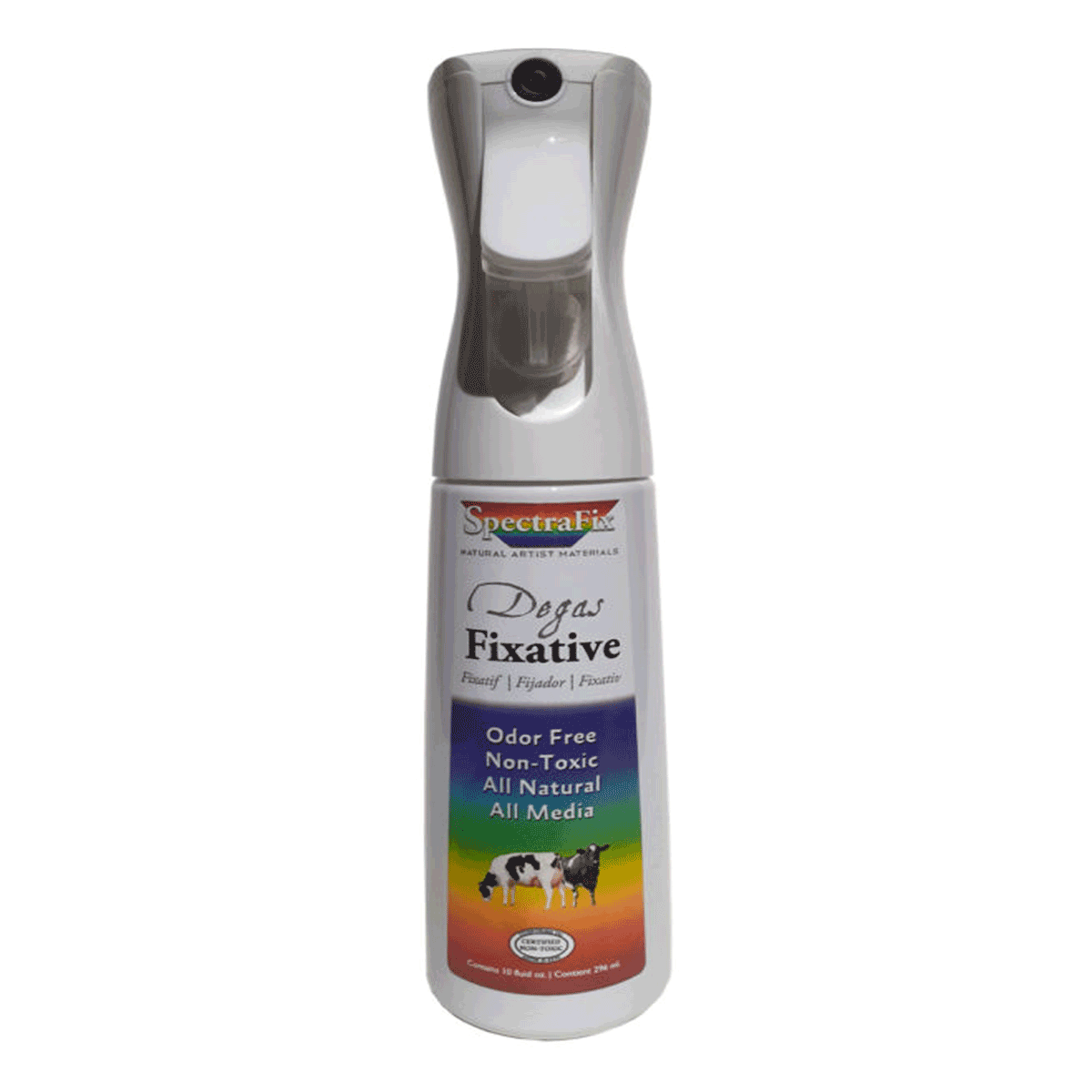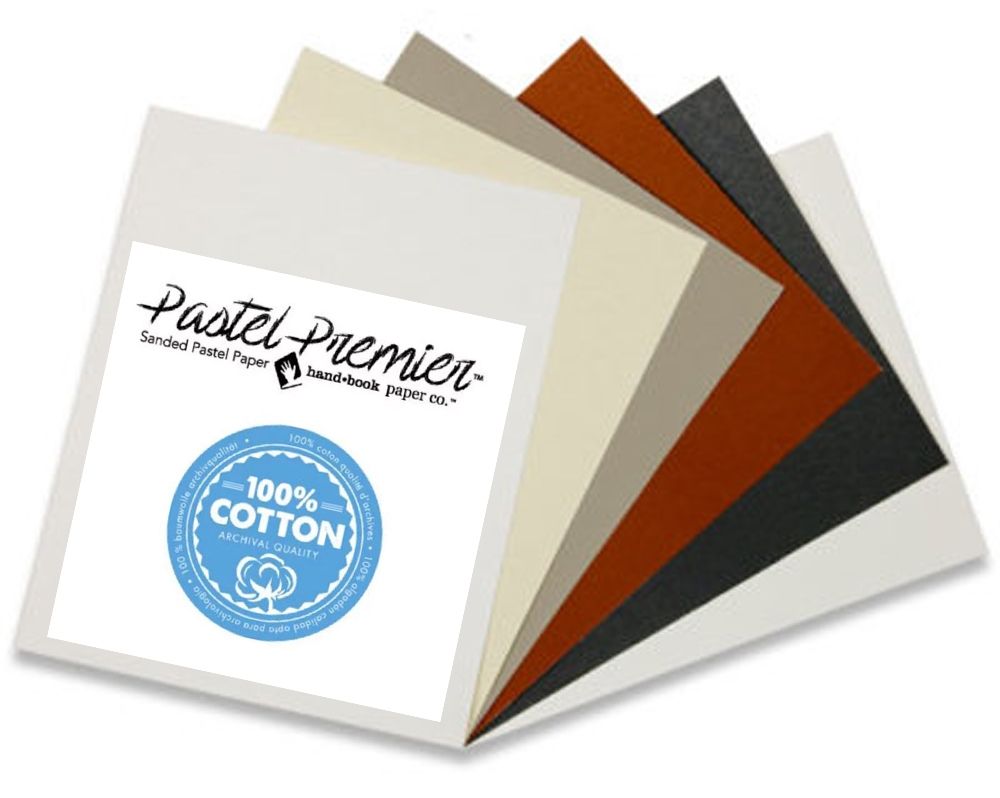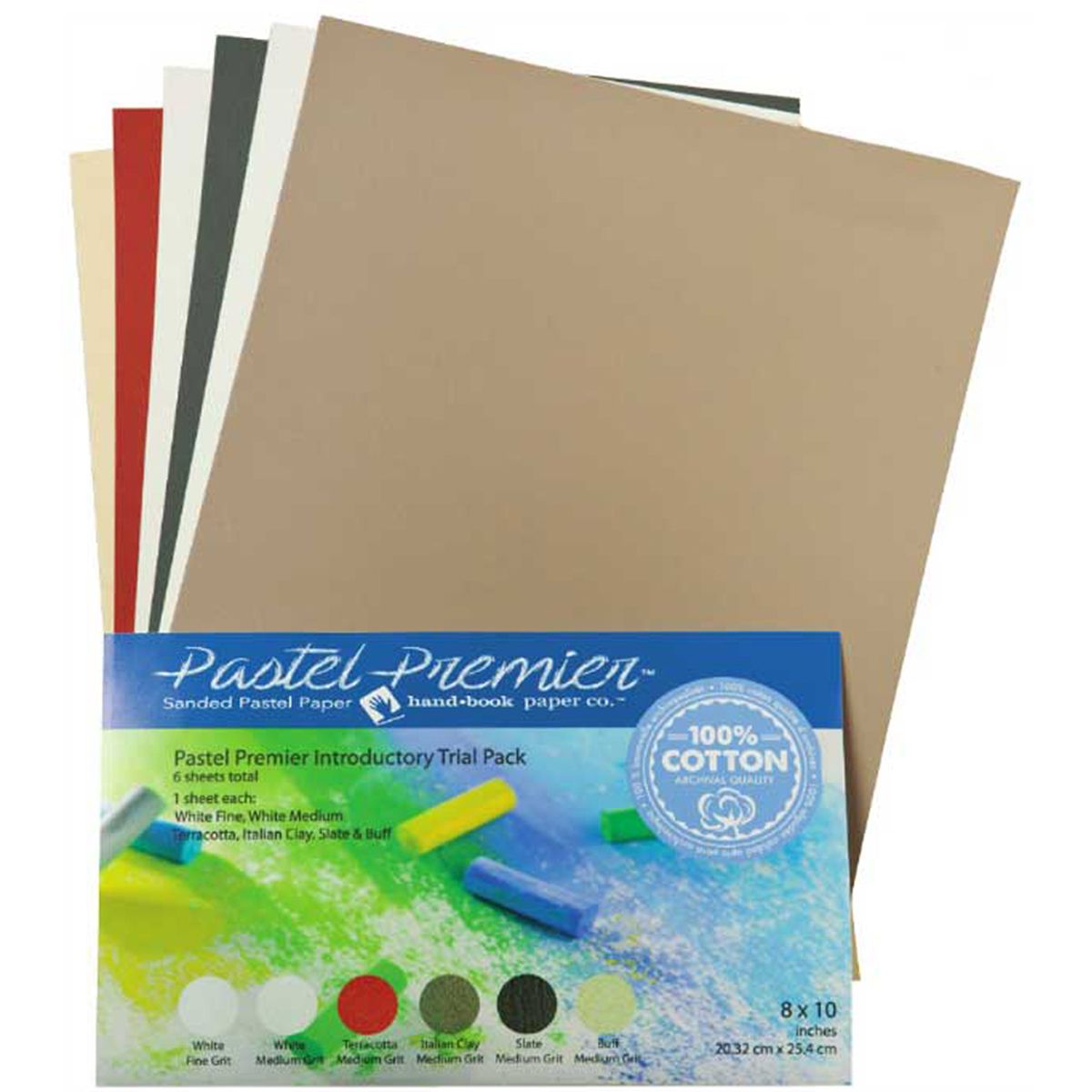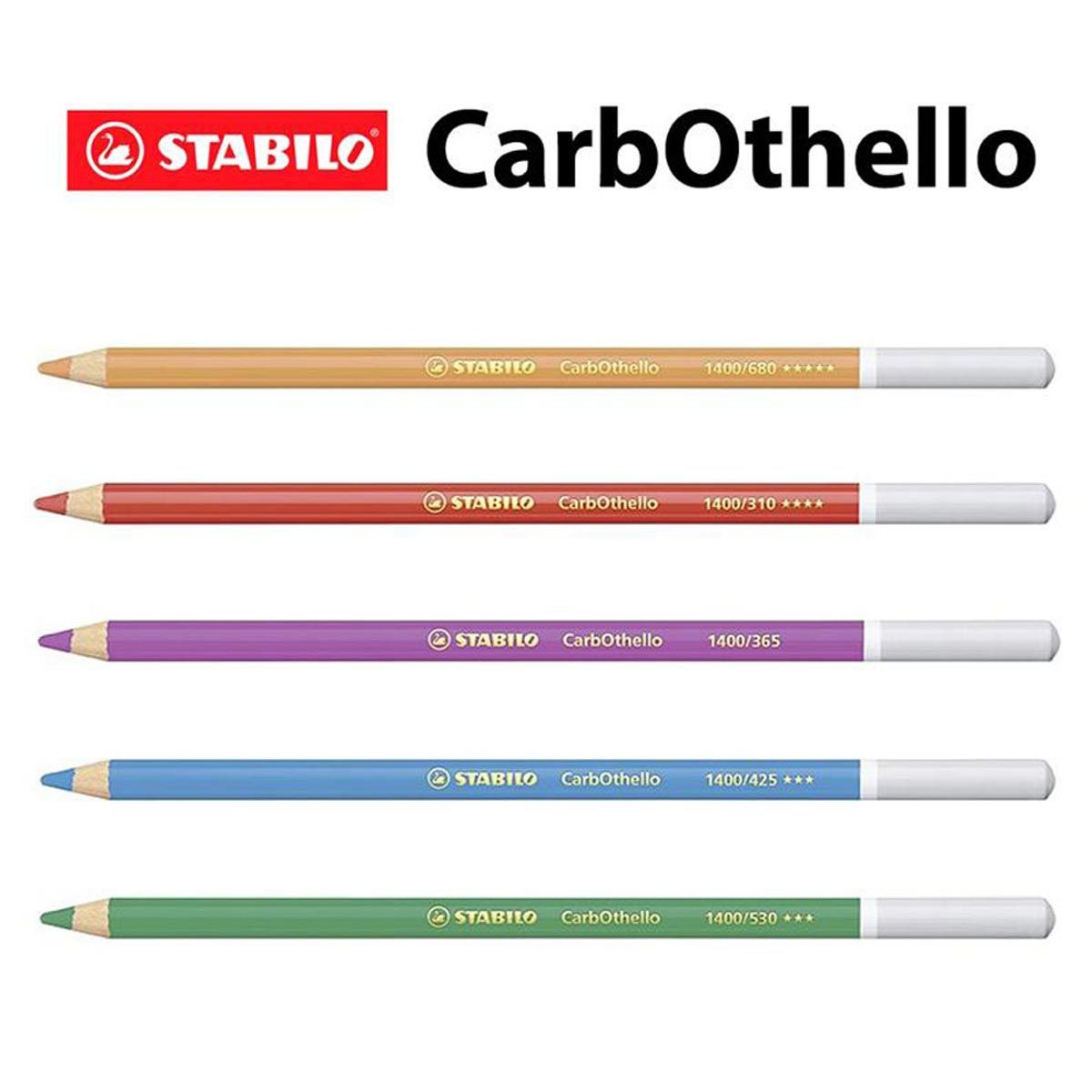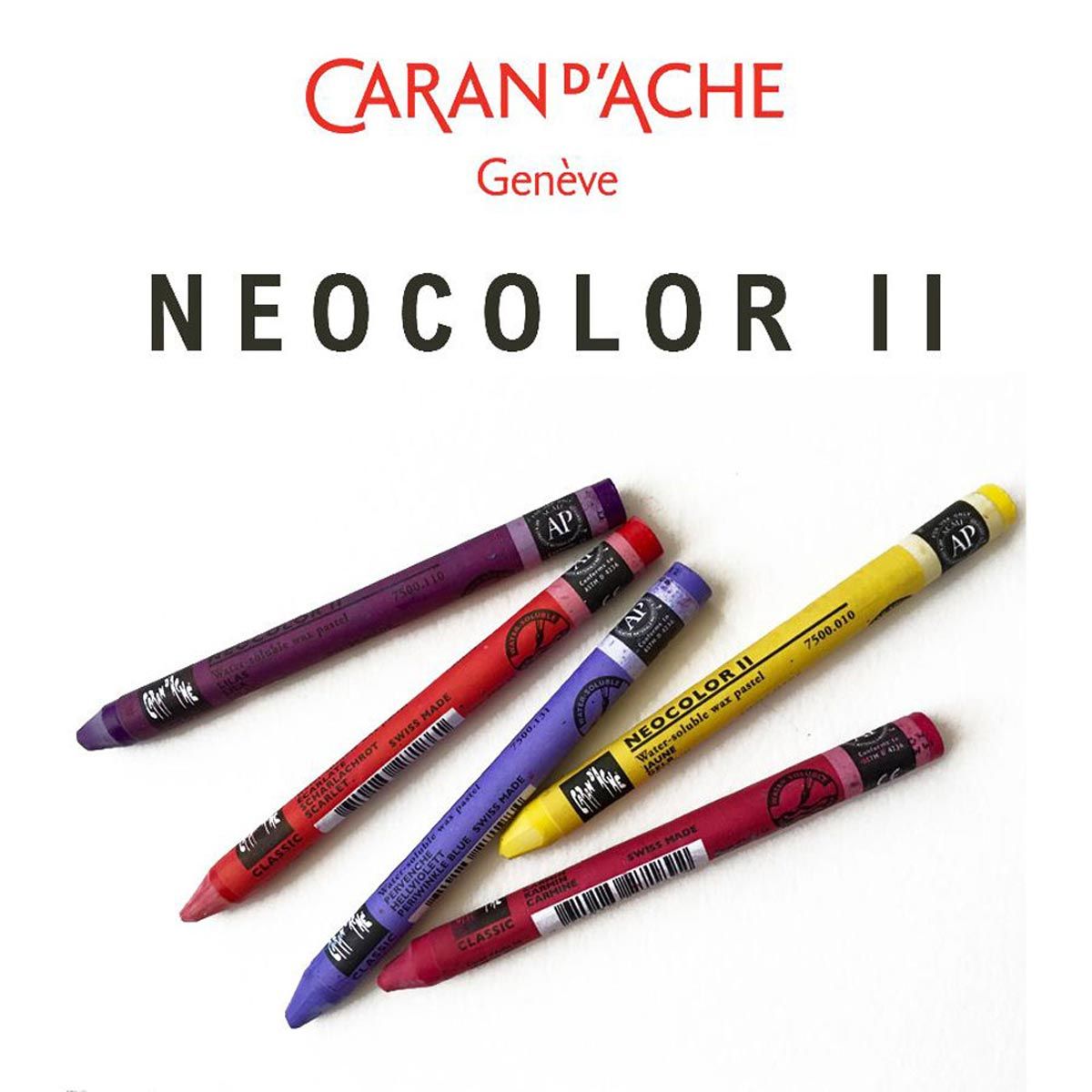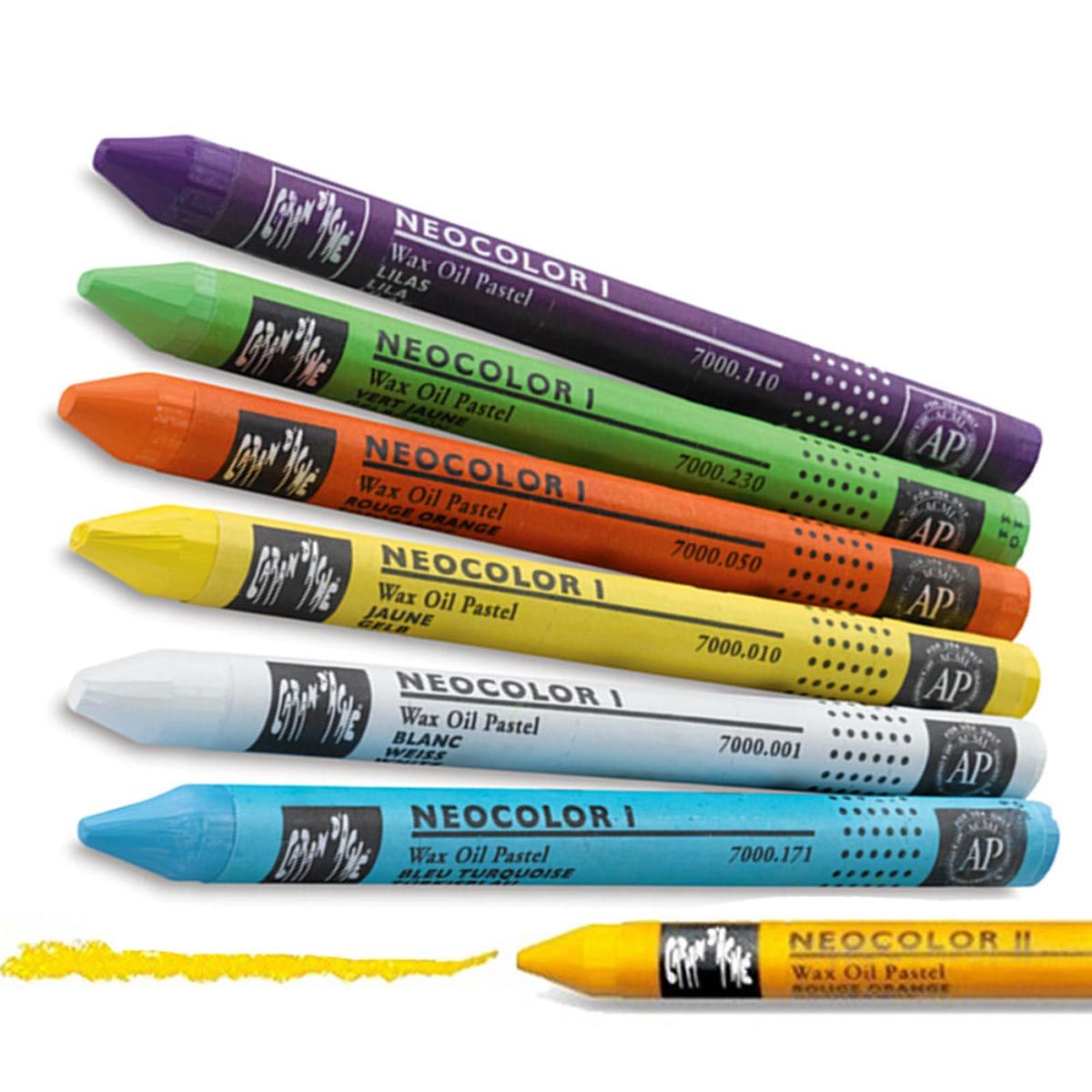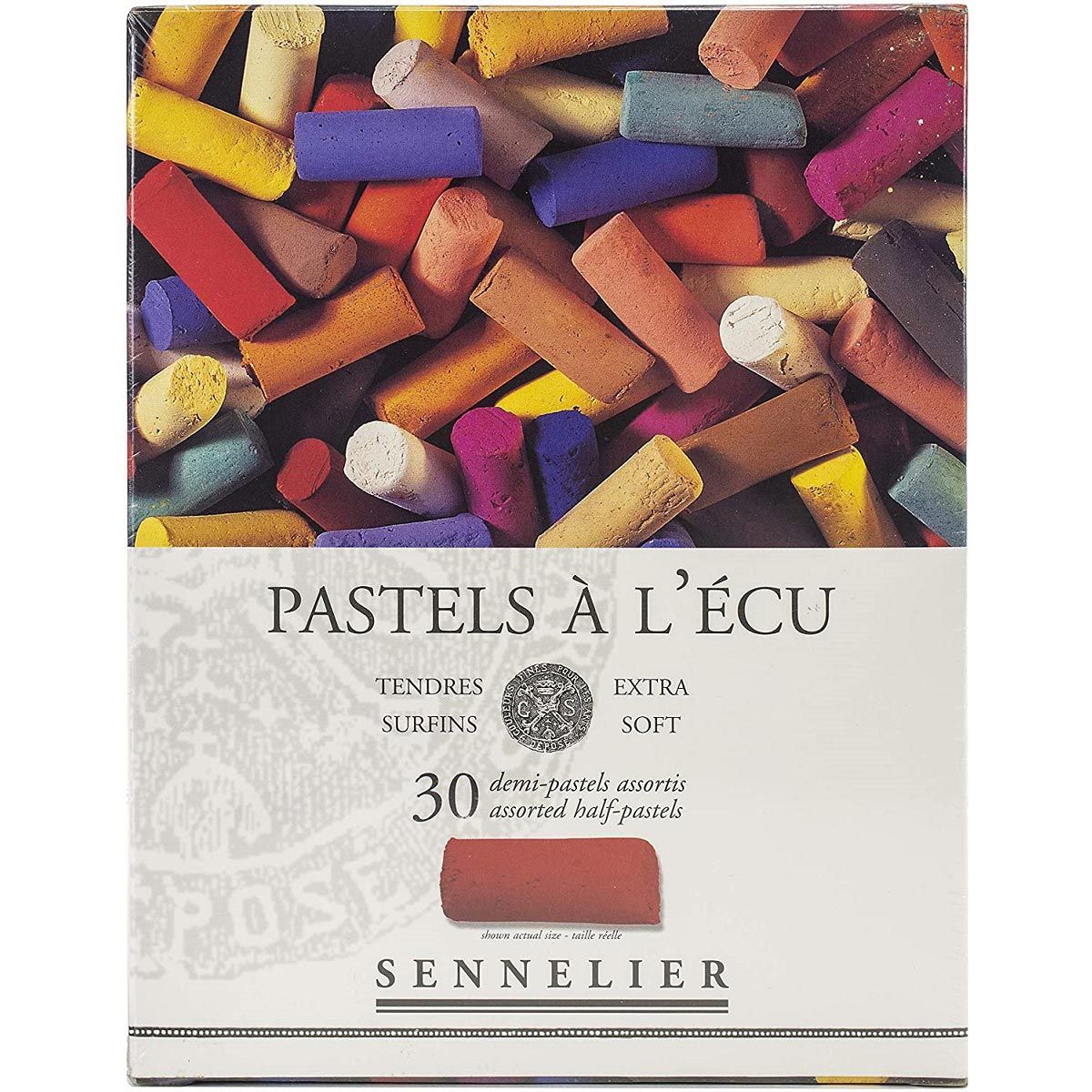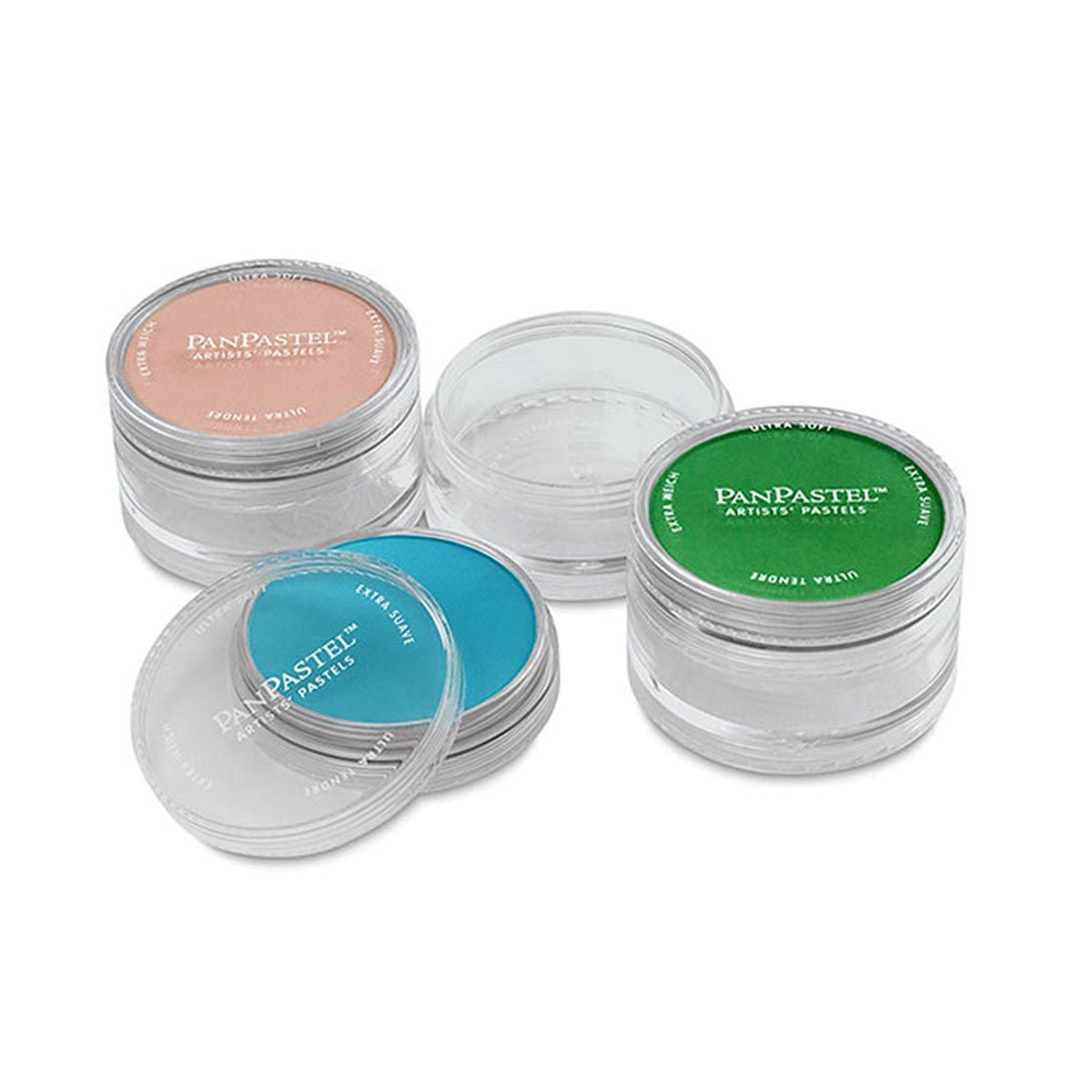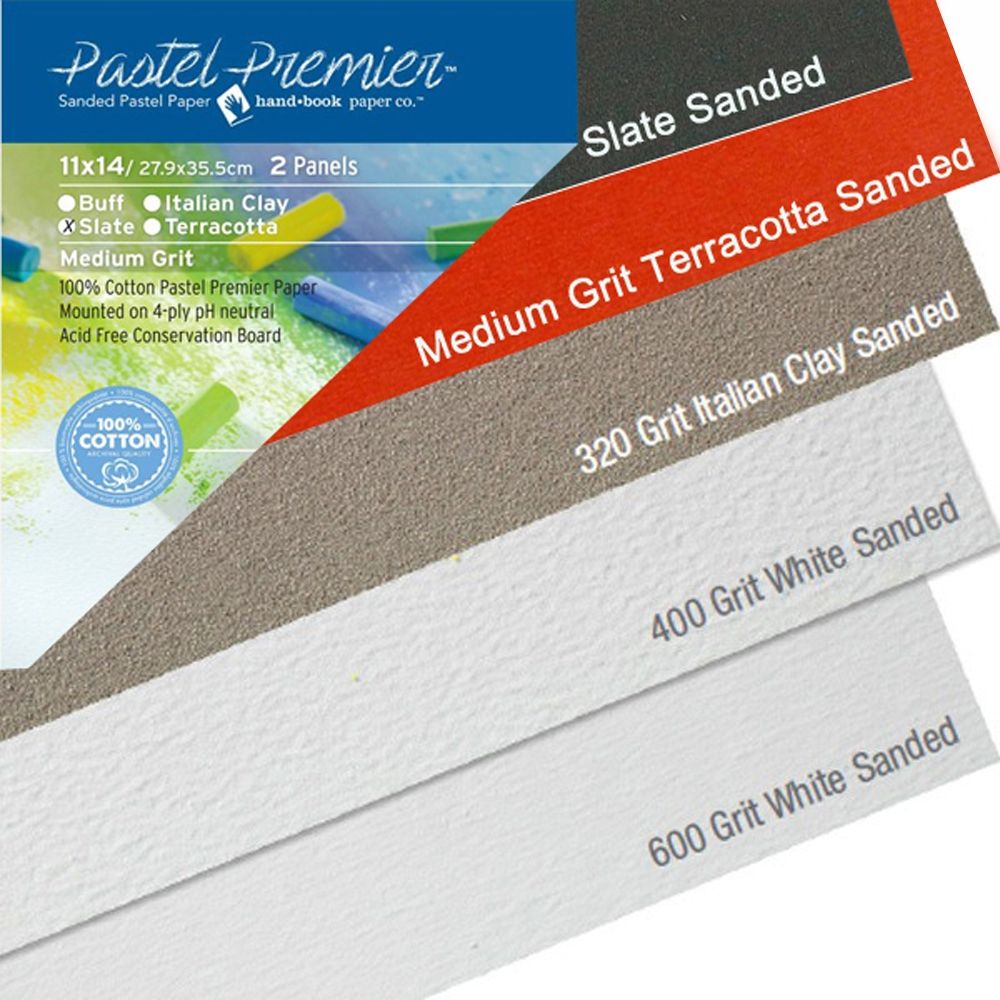Pastel lies between the boundaries of drawing and painting. Pastel painting arose approximately a century before Leonardo da Vinci’s first pastel drawings. Pastel started with representative studies and large mural outline sketches, using organic carbon-based red ochre, soot and chalk, they then use their fingers, cloth or paper to rub and mix the chalk lines to create gradational values, thus, transitioning from mere sketches to pastel paintings.
The first pastel chalks were plant-based pigments and extended to synthetic pigments expanding the palette range equal to oil paints. The Roccoco retro era established the use of fired gypsum and kaolin replacing chalk materials, rendering real chalk progressively scarce.
Today, pastels can be used as a dry or wet media and comes in a variety of formats like crayon, stick, pencil or pan. The pigments used in pastels are the same as those used to produce all coloured art media, including oil paints. Pastels can be effortlessly applied, mixed and blended, making them perfect for plein air painting. The dry media allows you to work rapidly and block in your painting. They need no water, brushes, or mixing mediums, and their splendid hues make wonderful, brilliant show-stoppers.
The traditional “Dry Pastel” consist of dried pigment with just enough non-greasy binders such as gum arabic and gum tragacanth or methyl cellulose, pioneered in the twentieth century. The mineral filler gives support to the fragile soft pastel sticks. A chalk, clay or alabaster gypsum, talcum powder component is commonly present in pastel stick and pencil formulation, and white or black pigments are added to create tints and shades.
The pastel can be applied to the paper with a diluent or not. Soft pastel produces a subtle effect, with a beautiful velvety quality, the disadvantage of dry media is that it easily smudges or dislodges from smooth surfaces. This can be counteracted by using a fixative, but fixing can affect the pastel colour and texture.
Pan Pastel consists of pure powdered pigment and minimal binder. While pastel sticks or crayons consist of pure powdered pigment combined with a binder and filler. Some pastel brands use an abrasive mineral like pumice in the binder, adding tooth onto the paper. The inorganic and organic composition also varies by individual manufactured pastel grade, pigment and filler quality to produce various format; Soft, Semi-Hard or Hard Pastel, Oil pastel, Wax Pastel, Conté, Sanguine and Charcoal.
Conté pastel drawing pencils may contain compressed charcoal or graphite with a base filler of wax and kaolin clay mixed in combination as well as organic pigments for colour that are created for sketching. Although Conté crayons look similar to pastel, they produce less dust because of their waxier hardness. Conté crayons product is similar as charcoal, including fine detailing making them perfect for figure and portrait drawings.
The Caran d’Ache NEOCOLOR l is a wax oil, water-resistant, creamy, economical pastel crayon with excellent light resistance. The crayon creates beautiful effects and can be applied to all materials (paper, cardboard, glass, wood, leather, fabric, stone, etc.) and when dissolved using turpentine, becomes a wax coating on hot metal, can be use in combination with NEOCOLOR II Water-soluble crayon and less messy. And contain various application potentials - to decorate numerous media painting and blending, wax coating, scraping, mixed media, superimposed colours, stencilling, sgraffito.
Soft Pastel on paper may require a fixative, because there's hardly any texture on the pastel papers to hold the dry media when mainly using soft pastel - pigment with hardly any binder. Even when applying little pressure, gnawing the pastel colour onto the paper, devoid of any “adhesive" keeping the pigment mounted on the top of paper without absorption into the paper as occurs with water or oil-based pastel or paint, it is recommended to apply a fixative on the pastel papers.
Harder pastel pencils and sticks are best on pastel papers, for they lay thin layers of pastel, less likely to fill in the tooth of the paper as fast. In contrast to abrasive or sandpaper that are recommended for soft pastel for they can hold many layers, and if one would like to keep the integrity of the silky velvety feel of soft pastels. The textured grit of the paper or board will be your workhorse.
Cretacolor Fine Art Pastel Pencils is another hard-pastel pencil that has brilliant colours and are intermixable and high lightfastness. These pencils are characterized as especially soft, oil-free strokes. Colours are mixable, wipe-able, and water-soluble. Fixing is required to make it insoluble or use to stabalize the coloured layers.
Our grandfather also used a colourless ethyl alcohol lacquer to protect their choice of chalk filler; marble flour, gypsum, white clay or ground dolomite paintings from deterioration. Todays Fixative is a crystal-clear liquid made out of resin or casein with a binder to evaporate faster, such as alcohol.
Fixatives help hold the dry media in place, especially when the tooth is full or for special effects like in shadows or darkening the background without losing soft details. Commonly used “Aerosol Spray Fixatives” are usually alcohol based, and hydrocarbon propelled and are toxic and should only be used in a well-ventilated area. While Spectra Fix works great on a dry media art to stabilise the dry pigment, charcoal or graphite keeping finished artwork from dust without changing the pigment pastel colour and environmentally friendly.
Disagreements against utilizing fixative do exist, the darkening of hues is the most pervasive, however the danger of the pastel colours tumbling off the paper into a heap of residue at the base of a frame’s edge exceeds everything because darkening can be limited by effectively using the fixative. It can also improve the lightfastness of the painting. But, utilizing a spray fixative has its own benefits and drawbacks. Let’s learn some pastels tips on how to use fixatives to create amazingly radiant pieces of Pastel art:
When to use Fixatives:
Pastel is extremely simple to use and apply; however, it likewise tends to "move" on the paper, or rub off if touched. Occasionally, adding a light layer of fixative over your art work as you paint enables your pastels to stay in place. This will help you construct your artistic creation in layers without feeling like you're cleaning the chalk back off as you move with it.
You may likewise need to utilize your fixative to deepen your dark shades.
Maybe you do not enjoy the thought of utilizing fixative throughout the painting process--that's okay! You have two options to consider. You can spray the fixative on the back of the paper and if done properly, it will soak into the paper capturing a light layer of pastel as it dries, and leaving the top layer of pastel dry. Professional framers and craftsmen apply a spacer between the pastel work and the matt, so that the pastel doesn't rub off onto the mat and glass. Devaluing the artwork.
In case you're open to utilizing fixative (either after or in the middle of painting) it can be a powerful instrument to help " adhere" your pastels in place so you end up with a completed piece that feels like it will endure the test of time, even if it experiences a marginally rough adventure in shipping or travelling.
When NOT to use Fixatives:
Utilizing an excessive amount of fixative can instantly ruin a pastel piece. When using an excessive amount of fixative, it will soon be impossible or difficult to incorporate more pastel into your artwork. The surface will likely be slick, and won’t hold any longer chalk. If applied to thick, the pastel will drip down and create a mess.
In the event you are using pastels frequently, you are likely to build up your own taste regarding fixative, and might end up changing your opinions about certain fixatives as you change your procedure. One essential thing to consider, nevertheless, is the fact that spray fixative should consistently be used outdoors or well-ventilated area with a mask. It is a toxic chemical and has a chemical smell, therefore, you ought not to inhale.
You also need to make sure you check out ALL safety instructions on the fixative can. In case, you’re painting for a display or simply painting around other individuals, you should take your pastel away from the others to spray your pastel work. The fumes may not disturb you, however, they are dangerous substance.
Also, after spraying the final coat, ensure that you clear its nozzle by holding the can upside down and spay until just air coming out of the nozzle and store it away from the reach of children and heat.
The best way to utilize fixative. Use a slight touch at a safe 12 to 16 inches away from your painting, and make sure your painting is vertical. Do not spay your painting laying down, you will get blobs on your painting. Let the artwork dry between coats before touching your painting, about 2 to 3 minutes. A good light touch may affect the tonal value of one's work. Before you “fix" it, enable the fixative to dry thoroughly. Remember to follow the basics and you won’t have to work so hard!
If you would like to not use fixatives or like the soft effects of a dry pastel, you could experiment with the many texture and sanded papers King’s Framing & Art Gallery carry that does not require any fixatives for the tooth of the paper holds your soft pastel in place.
We also carry Spectra Fix that you can use indoor and is completely environmentally friendly and safe. You can use it to block in your painting and/or fix you pastel. The bonus, the fixative does not shift the pastel colour in your painting. Light coating is recommended and let it sit for 2 to 3 minutes before working on it.
At King’s Framing & Art Gallery, we stock a wide variety of fixatives, Pastel papers, and pastel sets. Using the Spectra Fix Pastel Fixative Spray Bottle, it will not dull your colours and is environment-friendly too. Sennelier traditional fixatives Aerosol Spray, one for soft pastels, oil pastels, and charcoal. We also carry Krylon Workable Fixatif Clear Aerosol Spray. You can find more such products here.
Don’t forget to check out the Pastel Premier Sanded Papers which are double primed and an aluminium oxide coated to serve as the perfect surface to paint with your pastels, dry or mixed media. Please check out the assortment of pastel papers for your enjoyment. We’ve got some fantastic pastel sets like Sennelier Extra Soft Pastel Sets and Stabilo Carbothello Pastel Coloured Pencil and Jack Richeson Pastel sets and Holbein Pastel sets or Cana d’Ache Pastel pencils and crayon sets. Also, if you wish to start your new journey as a Pastel artist, you can master the necessary skills and special techniques of painting in pastel with Pastel Step by Step guide available on our website and in store.
So, don’t wait, you’ve got everything that you need. Gather some inspiration and start your Art Journey!
















